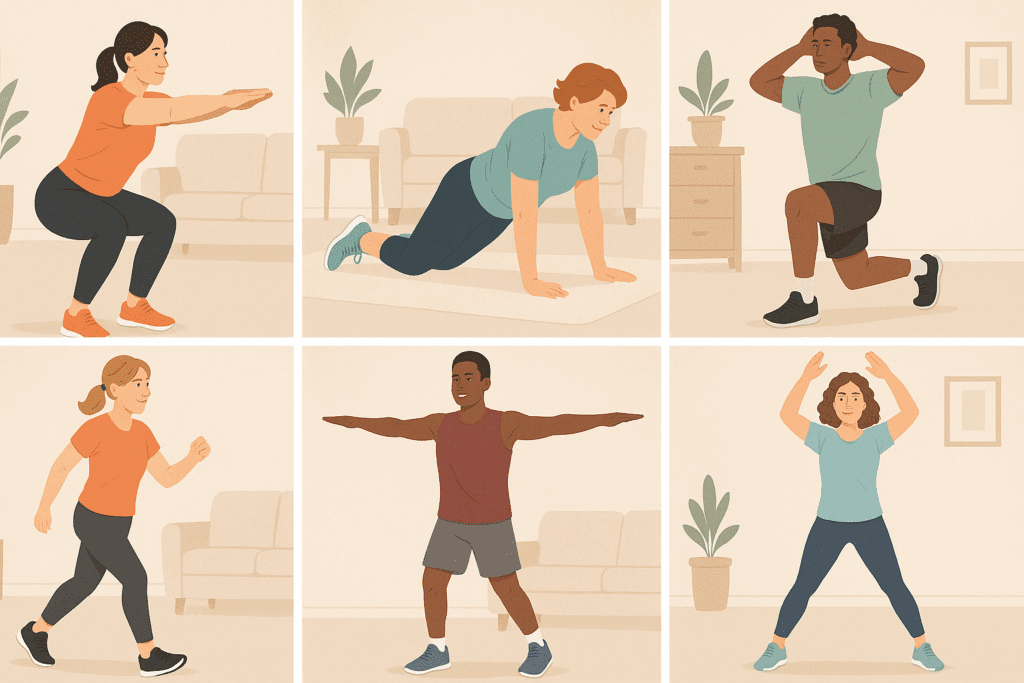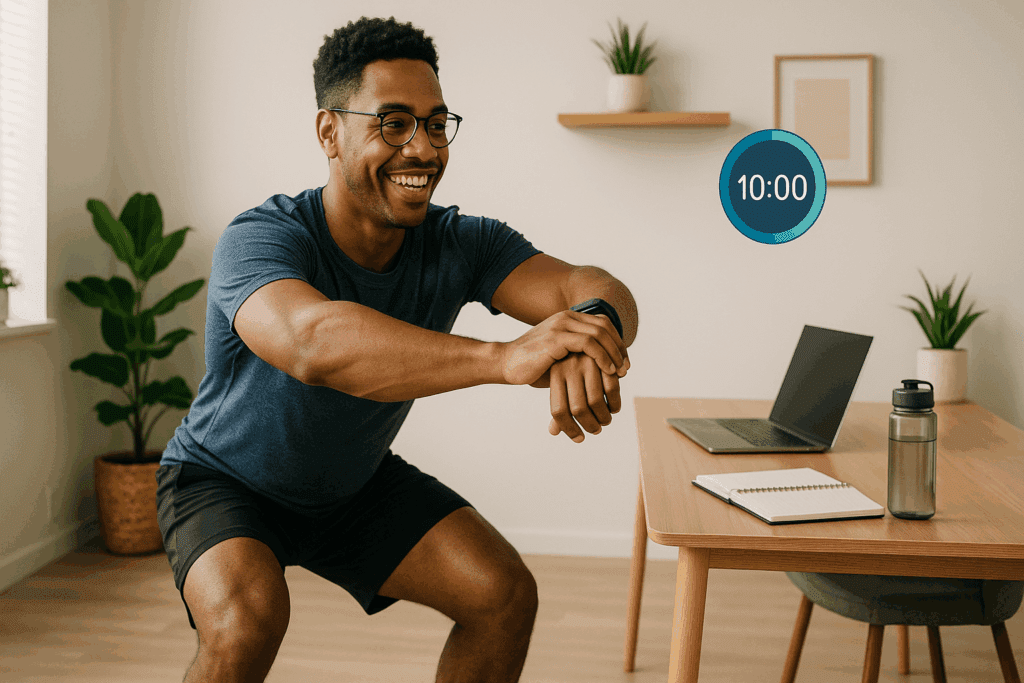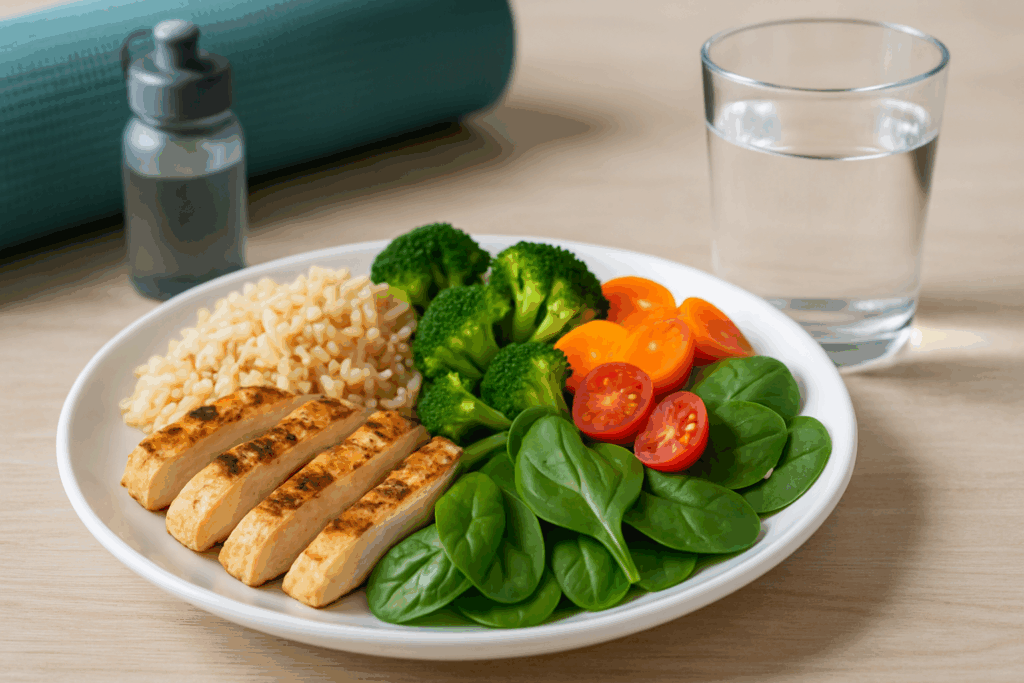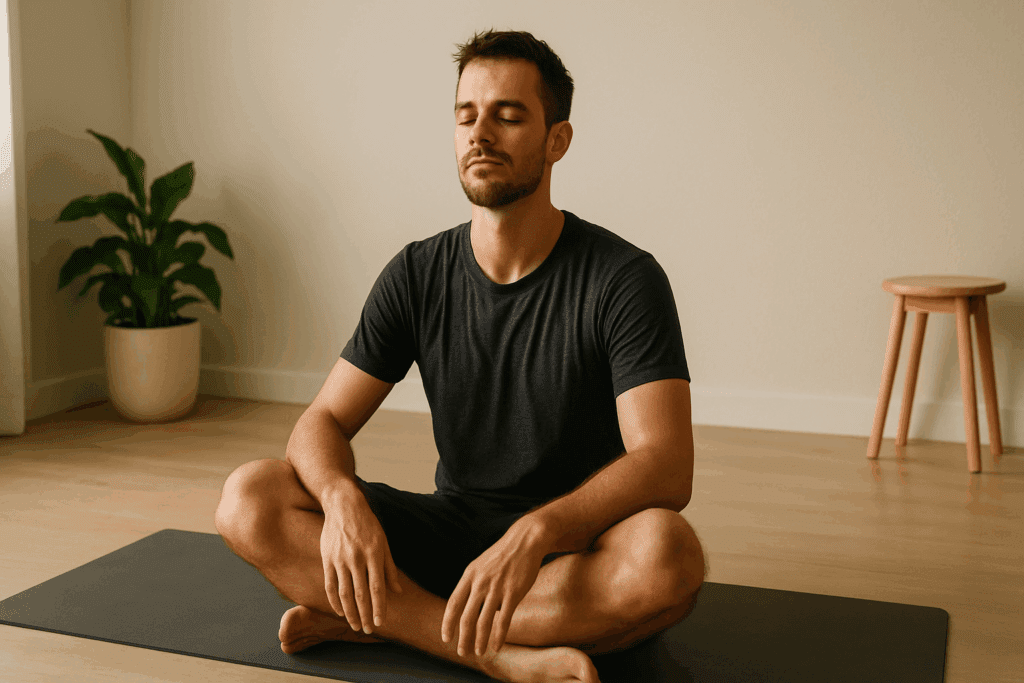Building a Strong Foundation: Why Endurance and Stamina Matter
For those just beginning their fitness journey, the path to improved health can often feel overwhelming. Concepts like “cardiovascular conditioning,” “aerobic capacity,” or even “anaerobic threshold” may sound intimidating, especially when paired with complex workout regimens. However, the reality is that enhancing your stamina and endurance doesn’t have to require hours in the gym or high-performance athletic gear. In fact, consistent practice with something as simple as an easy ten minute workout can lead to noticeable improvements in physical capability, energy levels, and overall wellness. Stamina and endurance are not exclusive to athletes; they are fundamental to everyday life. From climbing stairs without gasping for breath to carrying groceries or enjoying weekend hikes, these attributes determine how effectively and comfortably you move through your day.
You may also like: Build Running Stamina Fast: Best Exercises to Increase Endurance and Boost Performance Naturally
Endurance refers to your body’s ability to sustain physical activity over an extended period, while stamina is the physical and mental capacity to push through fatigue and maintain performance. Both are critical for maintaining metabolic health, supporting cardiovascular function, and improving cognitive resilience. Many people assume that long-distance running or intense training is required to build these traits, but modern exercise science supports a more inclusive approach. Short, focused workouts – particularly a 10 minute workout for beginners – can serve as a manageable entry point that builds confidence and delivers physiological benefits.
Moreover, embracing stamina training through brief sessions promotes habit formation. A key barrier to consistency in fitness routines is the misconception that results require large time investments. But when these micro-workouts are integrated into a daily or weekly schedule, they become stepping stones toward a more active lifestyle, yielding compounding benefits in both endurance and performance.

The Science Behind Short Workouts: Why Ten Minutes Can Be Enough
Skeptics may question whether ten minutes of exercise can truly make a difference, but numerous studies suggest that even brief bouts of moderate-to-intense physical activity can improve aerobic capacity, insulin sensitivity, and muscular strength. The trick lies in maximizing the quality of the effort and being intentional with each movement. A well-structured easy ten minute workout incorporates full-body compound exercises that simultaneously engage multiple muscle groups and elevate heart rate, which helps stimulate both aerobic and anaerobic systems.
One of the physiological mechanisms behind this effectiveness is Excess Post-Exercise Oxygen Consumption (EPOC), often referred to as the “afterburn effect.” When the body performs intense exercise, even for a short time, it consumes more oxygen afterward to return to its resting state. This increases calorie burn post-workout, amplifying the workout’s impact. High-Intensity Interval Training (HIIT) models often rely on this principle, but the same benefit can be achieved through moderate exertion when performed with minimal rest and consistent form.
Additionally, neurochemical responses to short workouts include increased endorphin production, improved dopamine sensitivity, and a rise in serotonin levels, all of which contribute to improved mood and mental clarity. For beginners, this translates into reduced stress, sharper focus, and better motivation, reinforcing the behavior loop that supports exercise adherence. The key is ensuring the ten-minute session is purposeful, with movements that challenge balance, coordination, strength, and endurance simultaneously.

Designing the Perfect Easy Ten Minute Workout for Beginners
The ideal 10 minute workout for beginners balances simplicity with intensity, accessibility with effectiveness. Movements should require little to no equipment, ensuring that anyone can perform them from home, a dorm room, or even an office break room. A solid framework might include dynamic warm-ups, bodyweight strength training, cardiovascular elements, and light stretching or cool-down.
A typical session could begin with one minute of dynamic stretches such as arm circles, leg swings, and torso twists to lubricate joints and raise body temperature. Following the warm-up, five to six exercises performed in intervals of 40 seconds of activity followed by 20 seconds of rest can create a rhythm that keeps the heart rate elevated while allowing brief recovery. Examples of beginner-friendly yet effective exercises include squats, modified push-ups, step-backs, standing crunches, and light jumping jacks.
Each of these movements recruits major muscle groups and can be scaled to suit one’s current fitness level. For instance, squats can be shallow for those with joint issues, or deepened as strength improves. Modified push-ups can be done from the knees initially, progressing to full push-ups over time. The key is consistency and intention. Even a single round of this easy ten minute workout performed daily can lead to improvements in cardiovascular function, muscular endurance, and energy levels within a few weeks.
Integrating Your Workout into a Busy Lifestyle
One of the biggest advantages of a ten-minute workout is its flexibility. Unlike hour-long gym sessions that require travel, setup, and cooldowns, a quick session can fit seamlessly into virtually any schedule. For college students juggling academic responsibilities, professionals balancing meetings, or parents navigating family demands, this type of exercise offers a sustainable entry point into fitness. And because it can be performed with minimal equipment and space, it is remarkably portable and adaptable.
Habit stacking is a useful strategy for incorporating short workouts into daily routines. This behavioral technique involves pairing a new habit with an existing one, making it easier to establish consistency. For example, you might do your 10 minute workout for beginners immediately after brushing your teeth in the morning or during a coffee break in the afternoon. Over time, this creates a subconscious association between the two actions, reinforcing the new behavior without relying solely on willpower.
Additionally, digital tools can serve as accountability partners. There are many apps and video platforms that offer guided ten-minute sessions designed specifically for beginners. Tracking your workouts and progress, whether with pen and paper or an app, can also foster a sense of achievement and provide visual evidence of your evolving strength and endurance.

The Role of Nutrition and Recovery in Building Endurance
While physical training is the catalyst for increased stamina, it is only one piece of the performance puzzle. Nutrition and recovery are equally vital, particularly for beginners whose bodies are still adjusting to regular activity. Endurance is fueled by glycogen stores, which are replenished through carbohydrates, and muscle repair is supported by adequate protein intake. A balanced diet rich in whole grains, lean proteins, healthy fats, and micronutrients supports recovery and sustained energy.
Hydration also plays a critical role. Dehydration can impair cardiovascular efficiency and lead to fatigue during even light activity. Beginners often underestimate how much fluid they lose through sweat, even in short sessions. Making water intake a priority before and after your easy ten minute workout helps optimize cellular function and reduce muscle soreness.
Equally important is sleep and active recovery. Sleep is the time during which your muscles regenerate and your nervous system recalibrates. Aiming for seven to nine hours of quality rest ensures that your body has the resources it needs to recover from workouts and build stamina effectively. Active recovery days, where low-intensity movement like walking or stretching is prioritized, also aid in reducing muscle stiffness and improving circulation.
Psychological Benefits of Short Workouts and the Stamina Mindset
The benefits of brief exercise sessions extend well beyond the physical. A ten-minute workout can act as a mental reset, enhancing clarity, reducing anxiety, and bolstering self-esteem. Physical movement stimulates the release of neurotransmitters like dopamine and serotonin, which play key roles in regulating mood and motivation. For individuals coping with stress or low energy, even a short burst of movement can shift mental states and improve outlook.
Moreover, the commitment to completing a brief but focused workout reinforces discipline and fosters a growth mindset. Success in one area of life often spills into others. Overcoming inertia and following through on a small, daily challenge builds confidence that can transfer to academic, professional, or creative pursuits. This psychological momentum is particularly impactful for beginners who may doubt their capabilities or feel daunted by traditional fitness standards.
Developing endurance is as much about the mind as it is about the body. The act of pushing through physical fatigue teaches perseverance, while gradual improvements in stamina validate the power of consistent effort. Embracing an easy ten minute workout as a daily ritual creates a foundation for long-term resilience – both mentally and physically.

Adjusting and Progressing as You Grow Stronger
As your body adapts to regular ten-minute workouts, you may begin to crave greater challenges. This is a natural and beneficial sign of progress. To keep your stamina-building journey effective and engaging, consider gradually increasing the intensity, complexity, or duration of your sessions. You might start incorporating resistance bands, light dumbbells, or more advanced bodyweight movements like lunges or planks.
Interval timing can also be adjusted. Increasing your work interval to 45 or 50 seconds while shortening rest to 10 or 15 seconds enhances the cardiovascular load. Alternatively, you might string together two ten-minute circuits for a more demanding twenty-minute session as your schedule and endurance allow. The key is to listen to your body, honor recovery needs, and remain consistent in your commitment to movement.
Another way to progress is by setting specific goals. Whether it’s improving the number of reps per exercise, decreasing perceived effort, or reaching a weekly activity streak, having tangible targets can maintain motivation and focus. Fitness journals, smartwatches, or apps can help track these metrics, offering valuable insights into your growth and areas for continued improvement.

Choosing the Right Environment for Motivation and Safety
Creating an environment conducive to regular physical activity can significantly impact adherence and enjoyment. Whether you prefer working out at home, outdoors, or in a studio setting, your surroundings should support your goals. At home, having a designated corner with a yoga mat, towel, and water bottle can serve as a visual cue and reduce barriers to starting. Outdoors, fresh air and natural scenery can enhance mood and oxygen intake, making the workout more enjoyable.
Safety should also be a priority, especially for beginners. Wearing proper footwear, choosing a non-slip surface, and avoiding cluttered spaces can help prevent injury. It’s also helpful to warm up your joints before starting and pay attention to your body’s signals throughout the session. Pain and discomfort are different from muscle fatigue; knowing the difference can prevent strain and burnout.
If you feel uncertain about your form or movement safety, consider using beginner video tutorials or consulting a certified personal trainer for guidance. These resources can provide reassurance and ensure that you’re maximizing results while minimizing risk.

Reflecting on Your Progress and Cultivating Long-Term Habits
As you continue to incorporate short, focused workouts into your routine, take time to reflect on the broader impacts. Beyond changes in stamina or muscle tone, consider how your relationship with your body and your perception of what’s possible have evolved. Perhaps you feel more energized throughout the day or more capable of managing stress. These shifts matter deeply and signify meaningful progress.
Fitness is not a destination but a lifelong journey, and beginning with a manageable, effective routine like a 10 minute workout for beginners lays a foundation that can support future endeavors. What starts as a ten-minute habit can evolve into a more diverse and enriched movement practice. The important thing is that you show up, day after day, honoring your body and investing in your well-being.
Celebrate the small victories, whether it’s mastering a new movement, completing a week of workouts, or simply choosing to move even when motivation is low. These are the moments that build character and foster resilience, both physically and mentally.
Frequently Asked Questions: Easy Ten Minute Workout for Better Stamina and Performance
1. Can an easy ten minute workout actually support long-term cardiovascular health? Absolutely, and emerging research is increasingly supporting this idea. When performed regularly, an easy ten minute workout can create cumulative benefits for heart health by improving circulation, lowering resting heart rate, and enhancing oxygen uptake efficiency. These short workouts can be particularly effective when performed at moderate-to-high intensity, which helps train the heart to pump more effectively. Over time, this contributes to increased vascular elasticity and reduced arterial stiffness. While longer workouts may offer additional advantages, a 10 minute workout for beginners can be an excellent gateway to establishing cardiovascular resilience over the long term.
2. What are some overlooked ways to increase the effectiveness of a 10 minute workout for beginners? One powerful way to boost the impact of your 10 minute workout is through strategic breath control. Intentional breathing techniques—like nasal breathing or diaphragmatic breathing—can improve oxygen delivery and enhance focus, which makes each movement more purposeful. Another underutilized strategy is using mindful tempo changes; slowing down reps to increase time under tension or accelerating bursts of movement for short cardio spikes can help target different energy systems. Incorporating isometric holds, such as pausing in a squat or plank, also boosts muscular endurance without requiring additional time. These subtle adjustments can elevate an easy ten minute workout into a highly efficient and adaptive training session.
3. How do social and environmental factors influence commitment to a 10 minute workout routine? Surprisingly, social psychology plays a significant role in fitness adherence, even when it comes to micro-workouts. People are more likely to stick to a 10 minute workout for beginners when they have a support system, accountability partner, or even digital community cheering them on. Environmental cues also matter—setting up a dedicated, clutter-free workout space can reduce resistance to getting started. Background music, lighting, and even time of day can impact perceived effort and enjoyment. Creating rituals around your easy ten minute workout, such as wearing a specific outfit or rewarding yourself with a healthy smoothie afterward, helps integrate the practice into your identity and routine.
4. What physiological adaptations occur from repeated easy ten minute workouts? Consistently engaging in an easy ten minute workout prompts several physiological shifts. Initially, your neuromuscular system becomes more efficient at recruiting muscle fibers, improving movement coordination. Over weeks, mitochondrial density increases within muscle cells, enhancing energy output and stamina. The capillary network expands, allowing for better nutrient and oxygen delivery. These adaptations not only improve exercise performance but also support immune function, hormone regulation, and metabolic health. For those doing a 10 minute workout for beginners, even these short sessions can help kickstart cellular-level transformations that promote vitality and longevity.
5. Can a 10 minute workout for beginners help with mood regulation and stress relief? Yes, and in fact, it can be remarkably effective for emotional regulation. Physical activity triggers a neurochemical cascade that includes endorphins, dopamine, and serotonin—neurotransmitters associated with improved mood and reduced anxiety. Because an easy ten minute workout is low-barrier and manageable, it reduces the stress commonly associated with starting a fitness regimen. The short timeframe also helps minimize cortisol buildup that can result from longer, overly intense exercise. Practicing mindfulness or gratitude during the workout enhances its mental benefits, creating a double-layered approach to psychological wellness.
6. How can someone avoid hitting a plateau when doing easy ten minute workouts long-term? Variety is the antidote to stagnation. While a 10 minute workout for beginners may start with basic bodyweight movements, progress can be achieved by adjusting variables like tempo, range of motion, and resistance. Periodically changing your workout focus—for instance, dedicating one week to cardio-based movements and another to strength-focused exercises—can activate different muscle fibers and prevent adaptation. It also helps to apply the principle of progressive overload, which means gradually increasing intensity, reps, or resistance. Small changes, like incorporating a balance challenge or transitioning to unilateral movements, can also keep your easy ten minute workout both effective and mentally engaging.
7. Are there specific populations who benefit most from starting with a 10 minute workout? While anyone can benefit, certain groups may find a 10 minute workout for beginners especially transformative. These include individuals recovering from illness or injury, seniors looking to maintain mobility, people with sedentary jobs, and new mothers easing back into physical activity. For those with time constraints or chronic fatigue, an easy ten minute workout can provide a safe, energizing entry point into a more active lifestyle without overwhelming the nervous system. The low intimidation factor of short workouts makes them ideal for individuals who have struggled with motivation or felt excluded from mainstream fitness culture.
8. How can wearable tech enhance an easy ten minute workout experience? Smartwatches and fitness trackers can significantly elevate the precision and personalization of your workouts. Tracking heart rate zones, for example, allows users to determine whether their 10 minute workout for beginners is reaching the desired intensity for aerobic or fat-burning benefits. Wearables can also monitor consistency over time, offering visual cues and reminders that help reinforce new habits. Some advanced models even offer guided coaching or real-time feedback on movement quality. These data-driven insights help fine-tune an easy ten minute workout and allow for more informed decisions about recovery, nutrition, and progression.
9. What role does mental imagery or visualization play in workout performance? Visualization is a powerful tool often overlooked in fitness. By mentally rehearsing movements before performing them, you can enhance neuromuscular coordination and reduce hesitation during your 10 minute workout for beginners. This technique has been shown to improve performance in both strength and endurance activities by pre-activating motor pathways in the brain. Visualization can also increase confidence and reduce performance anxiety, making it easier to approach new or challenging exercises. Integrating mental imagery into your easy ten minute workout adds a cognitive dimension that not only boosts outcomes but deepens your engagement with the process.
10. Can easy ten minute workouts support other health goals like better sleep or digestion? Indeed, they can. Engaging in light-to-moderate physical activity, even for just ten minutes, has been linked to improvements in sleep latency and quality. Movement stimulates the parasympathetic nervous system post-exercise, especially when done earlier in the day, promoting a deeper and more restful sleep cycle. A 10 minute workout for beginners can also aid digestion by stimulating intestinal contractions and reducing bloating or discomfort associated with a sedentary lifestyle. Additionally, these workouts can regulate blood sugar and reduce inflammation, supporting broader metabolic health. Over time, the consistent practice of easy ten minute workouts becomes a foundational wellness strategy that extends beyond fitness and touches nearly every aspect of health.
Final Thoughts: Embrace the Power of an Easy Ten Minute Workout to Build Endurance Naturally
There is profound strength in simplicity. While the fitness industry often glorifies complexity and intensity, science and experience show that meaningful change can begin with just ten minutes a day. By choosing to engage in an easy ten minute workout tailored for beginners, you commit to honoring your health, building your stamina, and unlocking your potential.
This practice isn’t about perfection or performance; it’s about presence and perseverance. It’s about meeting yourself where you are and taking small, consistent steps toward greater endurance, enhanced performance, and improved well-being. With each session, you affirm your capacity to grow, to adapt, and to thrive – not only in fitness but in every area of life.
Let the momentum of this simple routine carry you forward. Whether you’re taking your first steps into exercise or returning after a break, trust in the process. The body is remarkably adaptable, and with patience and dedication, even a short, ten-minute workout can ignite a transformation that reaches far beyond the physical. Your journey to stamina starts now – and it starts with just ten minutes.
Was this article helpful? Don’t let it stop with you. Share it right now with someone who needs to see it—whether it’s a friend, a colleague, or your whole network. And if staying ahead on this topic matters to you, subscribe to this publication for the most up-to-date information. You’ll get the latest insights delivered straight to you—no searching, no missing out.
Further Reading:
How to Start Exercising: A Beginner’s Guide to Working Out
What’s the Difference Between Endurance and Stamina?
How to Increase Stamina: 16 Ways to Power Up a Workout
Disclaimer
The information contained in this article is provided for general informational purposes only and is not intended to serve as medical, legal, or professional advice. While NewsHealthWatch strives to present accurate, up-to-date, and reliable content, no warranty or guarantee, expressed or implied, is made regarding the completeness, accuracy, or adequacy of the information provided. Readers are strongly advised to seek the guidance of a qualified healthcare provider or other relevant professionals before acting on any information contained in this article. NewsHealthWatch, its authors, editors, and contributors expressly disclaim any liability for any damages, losses, or consequences arising directly or indirectly from the use, interpretation, or reliance on any information presented herein. The views and opinions expressed in this article are those of the author(s) and do not necessarily reflect the official policies or positions of NewsHealthWatch.

